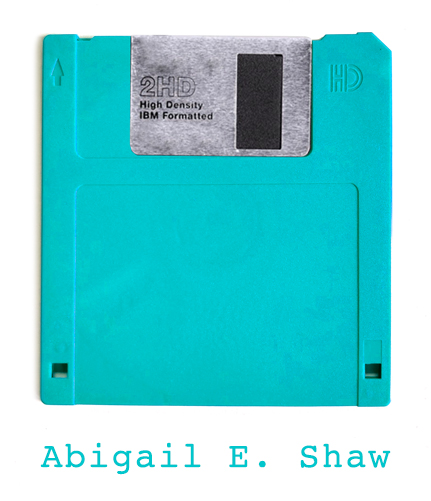
|
A4: Develop effective learning environments and approaches to student support and guidance.
I teach in, create, and support the design of a wide range of learning environments. The majority of my work revolves around the Virtual Learning Environment (VLE) employed by every taught module at St. Mary’s. The VLE is a core environment in HE, containing, reflecting, creating and assessing learning throughout students’ study, and it’s vital it’s as relevant and well-designed as possible to accommodate all types of learner, and all standards of technological access and competence (K2, K3, V1, V2, V3). My support and guidance of learners in this educational space is intended to enable them to experience, or move towards, digital fluency – “the ability to reformulate knowledge and produce information to express oneself creatively and appropriately in a digital environment” (Wang et al., 2012) – in the VLE without barrier or anxiety (D2v, K3, V1, V2, V3). I approach this by supporting academics (as “the academic staff…ultimately determine the success of the VLE” (Weller, 2007)) with:
Via
The most effective is whole-programme design of programme/individual modules (A2, Evidence 2, Evidence 3, Evidence 5), as this affects entire cohorts equally, allows me to ensure the VLE aligns with taught content ensuring “meaningful and measurable student learning outcomes” (Friedlander and Serban, 2004), and creates a strong working relationship between myself and the programme, ensuring fluid communication in the event of any issues (K1, K2, V3, V4). I learnt early on that academic staff are often anxious about working in-depth with the VLE, reflecting the pervasive idea that "[Digital] Tools...are often used more confidently by learners than by the teaching staff themselves” (Beetham, 2012), suspecting their students are far more technologically competent than they are themselves (Evidence 7). In my experience, however, the “digital native” (Prensky, 2001) is increasingly more likely to be the academic, with exposure to and understanding of technology far exceeding that of students who aren't from technology-rich backgrounds (K3, V1, V2). I work to assuage academic fears or misperceptions by explaining that their learners are not necessarily the experts they expect (Kirschner and De Bruyckere, 2017), creating an encouraging environment, stating no knowledge or technical expertise is required (where true), and emphasising two-way learning, stressing that I, too, am there to learn how software appears to users, what is and isn’t intuitive. I always commend mistakes or error messages achieved as valuable insight, and use academics’ live understanding of the potential for emotional discomfort derived from technological confusion to encourage good instructional design so that, once students are in the VLE, their environment is as free from negative emotional triggers like “frustration…fear, anxiety, apprehension…shame…” as possible (O’Regan, 2003), ensuring “effective teaching…engaging students in as much relevant activity as possible” (Biggs and Tang, 2011) (K2, K3, K5, V2). I worked on increasing ‘good instructional design’ extensively with academics during VLE training in Summer 2019 (elaborated on in A2, Evidence 4, Evidence 5). For Semester 1 2019, we had no incidences of “confusing” or “stressful” in VLE feedback (commonplace in 2018), and significant amounts of “much better” and “much easier to find stuff” from returning students. I intend to run a detailed case study of module feedback from 2019-20 compared with 2018-19, assessing the impact of our VLE changes and scaffolding best practice outcomes further into 2020-21 modules (K4, K5, K6, V3). I support students directly with a range of formal and informal approaches, including:
The combination of in-lecture work and online resources seems most effective, as it has the widest reach. I have learnt that static online support, aside from providing help outside core working hours, is particularly effective for students who feel uncomfortable, frightened, unsure, or too proud to ask for help (Wong and Chiu, 2018). In-lecture work allows me to reach students who have yet to engage with the VLE, and to support and encourage their doing so. Whilst good VLE design includes creating as little as possible for students to require support with, knowing a spectrum of resource exists outside one’s programme may also help with the sense of belonging to the university as a whole, thus it is important to me to widen the students’ sense of support and community wherever possible (D2v, K2, K3, V1, V2, V3). Digital fluency can only be achieved if one can first engage sufficiently within the environment to develop it. I work to ensure staff and students alike achieve the fluency required to create and interact with the digital environments they are required to use in their role as educator, learner, or both (V4). References Beetham, H. (2nd ed.) (2012) Rethinking Pedagogy for a Digital Age. London: Routledge. Biggs, J. and Tang, C. – Teaching for Quality Learning at University (4th ed.) (McGraw-Hill Education, UK) Friedlander, Jack & Serban, Andreea. (2004). Meeting the challenges of assessing student learning outcomes. New Directions for Community Colleges. 2004. 101 - 109. 10.1002/cc.158. Kirschner, P.A. and De Bruyckere, P. (2017). The myths of the digital native and the multitasker. Teaching and Teacher Education, 67 (2017), pp. 135-142, https://doi.org/10.1016/j.acalib.2019.102099 (accessed 22nd February 2020). Prensky, M. (2001) Digital natives, digital immigrants. On the horizon, vol. 9, no. 5. Wang, Emily; Myers Michael, D; and Sundaram, David, "DIGITAL NATIVES AND DIGITAL IMMIGRANTS: TOWARDS A MODEL OF DIGITAL FLUENCY" (2012). ECIS 2012 Proceedings. Paper 39. https://aisel.aisnet.org/ecis2012/39 (accessed 21st February 2020) Weller, M. Choosing, Using and Developing your VLE (2007, Routledge) Billy Wong, Yuan-Li Tiffany Chiu. (2019) Exploring the concept of ‘ideal’ university student. Studies in Higher Education 0:0, pages 1-12. (accessed 21st February 2020) |